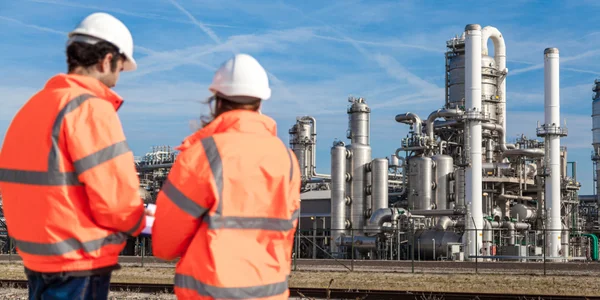Máy hút bụi đa lốc xoáy
- Máy lọc tĩnh điện
- Nhà túi khí ngược
- Bộ lọc vải
- Bộ lọc điện lai
- Khử lưu huỳnh khí thải
- Máy làm mát cưỡng bức
- Máy chà sàn
- Nhà máy làm sạch khí
- Lốc xoáy
- Đa nhân bản
- Hệ thống khử mùi VOC +
- Hệ thống hút bụi
- Hệ thống hút khói
- Thiết bị chống cháy nổ
- Quạt và máy thổi
- Xử lý nước thải
- Bộ trao đổi nhiệt không khí sang không khí
Văn phòng
TRỤ SỞ CHÍNH

Đức
-
Bộ lọc chuyên sâu Himenviro Technologies GmbH
Neustraße 45 - 49, 42553, Velbert, Deutschland/Đức - +49 20534200990
VĂN PHÒNG KHU VỰC

Anh quốc
-
Bộ lọc chuyên sâu Himenviro UK Limited
47, Bath Street WS13BX, Wallsall West Midlands, Vương quốc Anh - +44 1922 628893
VĂN PHÒNG KHU VỰC

Các Tiểu Vương Quốc Ả Rập Thống Nhất
-
Bộ lọc chuyên sâu Himenviro Technologies FZE – LLC
Trung tâm thương mại, Khu thương mại tự do Sharjah Publishing City, Sharjah, UAE - +971-556074697
VĂN PHÒNG KHU VỰC

Ấn Độ
-
Intensiv-Filter Himenviro Private Limited
D-247/11, Khu vực 63, Noida - 201301, Uttar Pradesh, Ấn Độ - +91-120-4642-500
VĂN PHÒNG KHU VỰC




Ấn Độ
-
Intensiv-Filter Himenviro Private Limited
D-247/11, Khu vực 63, Noida - 201301, Uttar Pradesh, Ấn Độ - +91-120-4642-500
VĂN PHÒNG KHU VỰC




Ấn Độ
-
Intensiv-Filter Himenviro Private Limited
D-247/11, Khu vực 63, Noida - 201301, Uttar Pradesh, Ấn Độ - +91-120-4642-500
Hệ thống thu gom bụi đa năng cho ngành công nghiệp
Sau khi qua cyclone, hệ thống thu gom bụi đa bản sao là một bộ thu bụi cơ học. Bên trong buồng, nó có một số ống cyclone song song tách các hạt bụi nặng ra khỏi luồng không khí. Trong một số ứng dụng, nó hoạt động như một bộ bẫy tia lửa chính cũng như một bộ tách chính để giảm tải bụi trên bộ lọc túi hoặc bộ thu bụi.
Ống thu gom bằng gang được sử dụng trong bộ thu bụi Multi clone có tuổi thọ lâu hơn các ống làm bằng vật liệu khác. Đối với các ứng dụng liên quan đến nhiệt độ cao hoặc xói mòn đáng kể, ống thu gom và cánh quạt bằng hợp kim đặc biệt được cung cấp.
Các tính năng của hệ thống thu gom bụi đa bản sao của chúng tôi
- Không có bộ phận chuyển động hoặc quay nên không cần bảo trì
- Thiết kế ống khác nhau cho các ứng dụng khác nhau
- Kinh nghiệm toàn diện trong việc lựa chọn sản phẩm
- Giảm áp suất vận hành thấp
- Ống hợp kim đúc/chế tạo có thể thay thế để tạo thành Multiclone
- Quạt ly tâm đầu vào tạo ra hiệu ứng xoáy tối đa
- Xây dựng chịu lực nặng
- Hiệu suất tách bụi cao hơn
- Ống thay thế có thể được đúc bằng hợp kim/thép
- Cửa kiểm tra dễ dàng tiếp cận để bảo trì
- Được trang bị van quay để hoạt động liên tục
Ứng dụng
Ứng dụng của Multiclones
- Ngành công nghiệp phân bón: Máy sấy đá phosphate & lò nung, máy sấy
- Không chứa sắt: Lò phản xạ đồng, Lò cao Laea
- Bột giấy & Giấy: Lò nung vôi, Thu hồi nước thải, Lò đốt vỏ cây
- Ngành công nghiệp đường: Khí thải lò hơi, bộ phận đóng bao
- Sản phẩm khoáng sản: Máy sấy đá nhựa đường, lò nung xi măng
- Dược phẩm: Quạt bao viên thuốc, v.v.
- Ngành công nghiệp thép: Lò cao, Lò hồ quang điện, BOF, v.v.


Quá trình
Dịch vụ của chúng tôi
Nghiên cứu tình huống
Những câu hỏi thường gặp
1. What is a multi-cyclone dust collector?
A multi-cyclone dust collector is a device that cleans air by removing dust particles. It contains many small cyclones working together to capture dust from the air. This system is more efficient than single cyclones because the smaller cyclones create greater centrifugal force, improving dust separation.
2. How does a multi-cyclone dust collector work?
A multi-cyclone dust collector works by using multiple small cyclones to spin the incoming dusty air. The spinning motion forces heavier dust particles to move outward toward the cyclone walls, where they lose speed and fall into a collection area. The cleaned air then moves upward through the center of the cyclones and exits the collector.
3. What are the benefits of using a multi-cyclone dust collector?
Using a multi-cyclone dust collector offers several benefits:
- Hiệu quả cao: It effectively captures fine dust particles, improving air quality.
- Độ bền: With no moving parts, it requires minimal maintenance and has a long service life.
- Space-Saving Design: Its compact size makes it suitable for facilities with limited space.
- Hiệu quả về mặt chi phí: It operates without the need for filters, reducing replacement costs.
4. In which industries are multi-cyclone dust collectors commonly used?
Multi-cyclone dust collectors are commonly used in industries such as:
- Chế biến gỗ: To capture sawdust and wood particles.
- Cement Plants: For removing cement dust from the air.
- Steel Mills: To collect metallic dust and particles.
- Chế biến thực phẩm: To maintain clean air by removing food dust particles.
Dược phẩm: To ensure air purity by capturing fine dust during production.
5. How efficient are multi-cyclone dust collectors in removing dust particles?
Multi-cyclone dust collectors are highly efficient, capable of capturing particles as small as 5 microns with commendable efficiency. Their design, featuring multiple small cyclones, enhances their ability to separate a broad spectrum of particle sizes, making them suitable for industries requiring rigorous dust control.
6. What factors can affect the performance of a multi-cyclone dust collector?
Several factors can affect the performance of a multi-cyclone dust collector:
- Số lượng lốc xoáy: More cyclones can lead to better dust separation.
- Phân phối lưu lượng khí: Evenly distributed gas flow ensures optimal performance.
- Giảm áp suất: Higher resistance to gas flow can reduce efficiency; managing energy consumption is vital.
7. How does a multi-cyclone dust collector compare to a single cyclone separator?
A multi-cyclone dust collector is generally more efficient than a single cyclone separator. The multiple smaller cyclones in a multi-cyclone system create greater centrifugal force, leading to better separation of dust particles, especially finer ones. This design also allows for handling larger volumes of air while maintaining high efficiency.
8. What maintenance is required for a multi-cyclone dust collector?
Maintenance for a multi-cyclone dust collector is minimal due to the lack of moving parts. Regular inspections should be conducted to check for wear or blockages, especially in the cyclone inlets and dust discharge areas. Ensuring that seals are intact and that collected dust is removed promptly will help maintain optimal performance.
9. Can a multi-cyclone dust collector handle high-temperature gases?
Yes, a multi-cyclone dust collector can handle high-temperature gases. They are designed to operate at high temperatures, making them suitable for processes involving hot gases, such as those in cement kilns or metal smelting operations. Special materials and designs can be used to accommodate specific temperature requirements.
10. Are multi-cyclone dust collectors suitable for capturing very fine dust particles?
Multi-cyclone dust collectors are effective at capturing fine dust particles, typically down to 5 microns in size. However, for extremely fine particles, additional filtration methods, such as fabric filters or electrostatic precipitators, may be used in conjunction with multi-cyclone systems to achieve higher efficiency.








